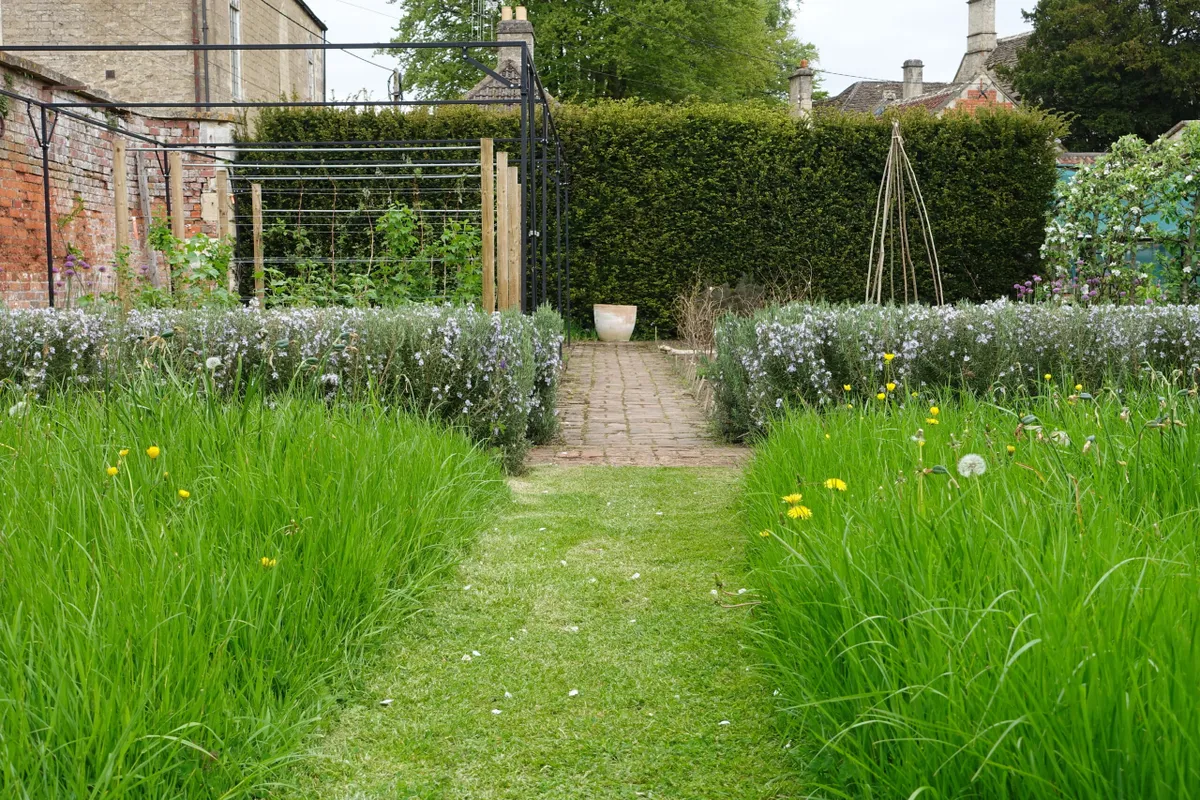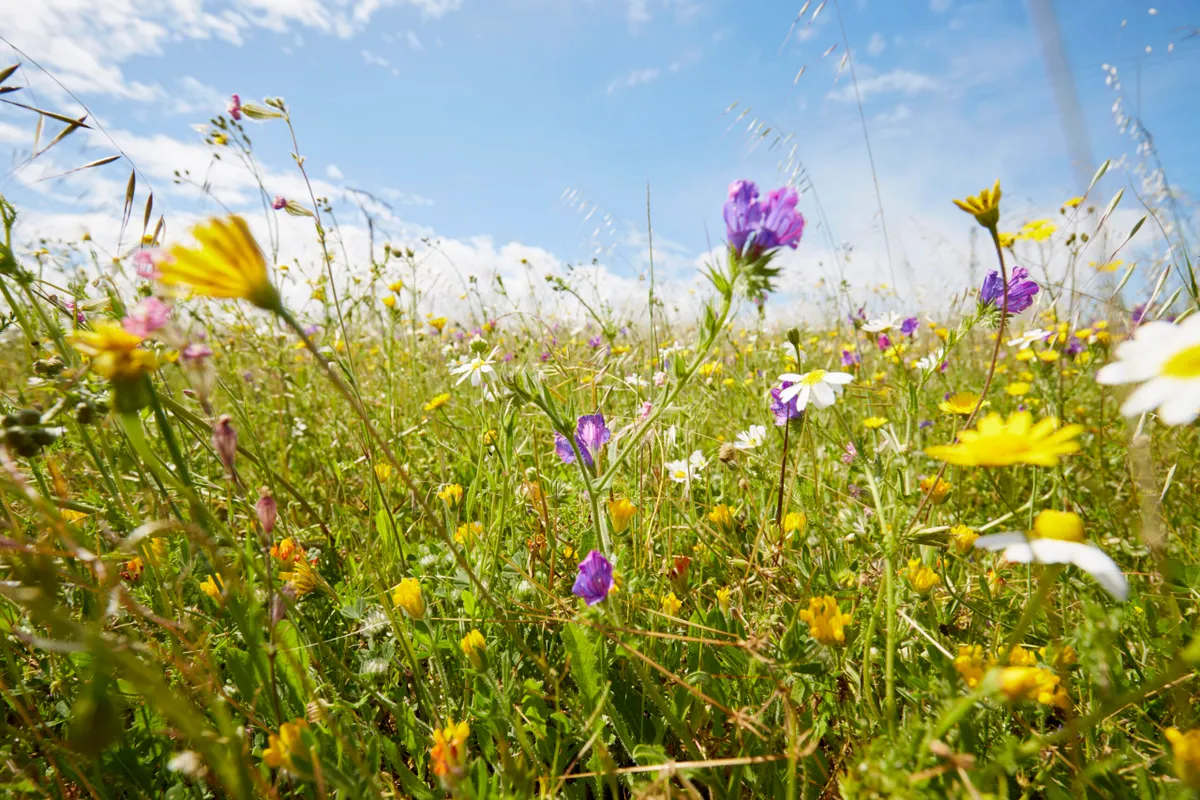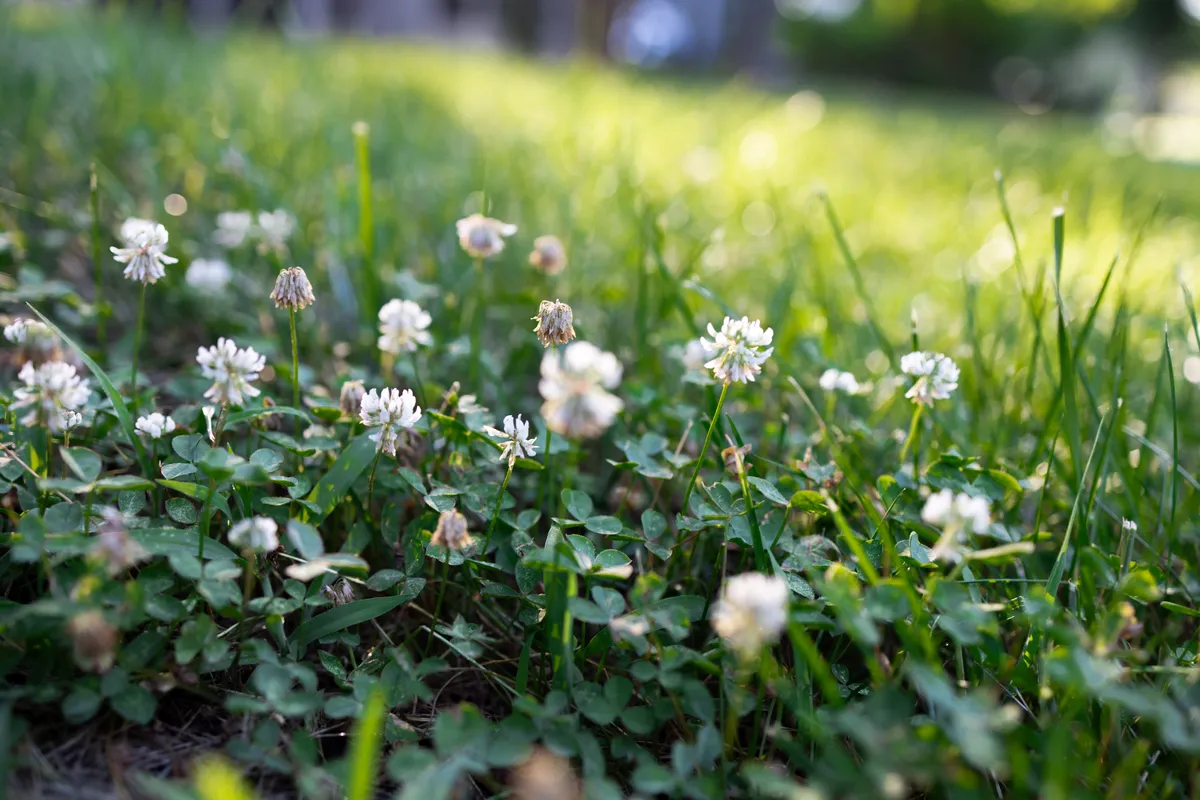The warming weather signals the point in the year when gardeners are able to turn their attentions back to their lawns, with regular mowing transforming a scrappy patch into an orderly sea of green.
The connection between mowing and the beginning of the gardening season is deeply entrenched in the psyche of gardeners, which is why No Mow May – the idea of avoiding mowing in May, suggested by charity Plantlife – is quietly revolutionary. Over the colder months, lawn maintenance mainly involves ensuring that mower blades are clean and sharp. But once spring begins to break through, regular cutting is high on the agenda. May is the window to summer and the point at which the once-dormant grass starts to shoot up in earnest and mowing traditionally gets under way. Most gardeners are desperate to get out and start chopping, and Plantlife’s 2019 survey of 2,000 gardeners revealed that most of us mow once every two weeks.

No Mow May 2025
The reason for thinking twice about our mowing habits comes down to stark facts. According to a report in the journal Biological Conservation, 97 per cent of British wildflower meadows have disappeared since the 1930s. A study published in the journal Nature Communications shows that many British pollinating insects are in decline, with rarer species, such as the red-shanked carder bee, really struggling. Between 1980 and 2013, every square kilometre in the UK lost an average of 11 species of bee and hoverfly. The reasons behind this are the use of insecticides, habitat loss and an overall reduction in biodiversity. Plantlife believes that people’s gardens can play a vital part in reversing this trend.
Mowing tips for encouraging wildlife
Cut once every four weeks Cutting just once a month encourages the maximum number of flowers to grow in your lawn. Ideally, leave around three to five centimetres of grass length.
Leave areas of long grass The experiment also resulted in greater diversity of flowers in areas of grass that were left completely unmown, with oxeye daisy, field scabious and knapweed offering up important nectar sources.
You don’t have to stop mowing completely Some species, such as daisy and bird’s foot trefoil, are adapted to growing in shorter swards. Cutting flowers from these plants once a month stimulates them to produce more blooms.

And it’s not just a belief: there’s now proof. Following the launch of No Mow May in 2019, figures show that if you mow less, the pollen count on your lawn can skyrocket. The charity’s citizen science experiment asked people to leave their mowers in the shed for May and count the flower species that subsequently popped up in a one-square-metre patch of their lawn. The results are indisputable: changing the way we mow can result in a tenfold increase in the amount of nectar available to bees and other pollinators. The new mowing regime saw an increase in the growth of daisies, germander, speedwell and creeping buttercup. And the species that benefitted changed each month – after stopping mowing for another month in July, participants saw a resurgence of white clover, selfheal and bird’s foot trefoil. The average square-metre patch of lawn surveyed after the experiment produced enough nectar to support almost four honey bees per day.
For botanist Trevor Dines, it’s a case of changing the way we all think about how we control our gardens. “It’s time for people to relax a little bit,” he says. “Avoiding mowing in this way means that instead of a dull monoculture of green concrete, your garden will be thriving and full of interest. I don’t think people realise how diverse our lawns can be.”

And the option to continue as we have been is not really a viable one. “The statistics for wildflower meadow loss are shocking: around 7.5 million acres have gone,” says Trevor. He describes how a colleague’s grandfather used to walk from Stratford-upon-Avon to Birmingham as a boy and not leave a wildflower meadow. “The loss of this landscape means a loss of food source for pollinators, which is one of the key drivers of their decline.”
It’s not necessary, either, to simply leave your garden to the elements. The ultimate concept of No Mow May is not really to stop mowing in May specifically, or to leave whole swathes of your lawn unmown. Behind the catchy title is a simple concept: get people to change their habits so that they mow less – ideally once a month – and possibly even leave a patch or two of grass to grow long. Gardens can really make a difference to the number of wildflowers in this country. As Trevor says: “We’ve lost the mosaic of meadows from the countryside but at least within our gardens we can do something in response to that.”
How to take part in No Mow May 2025
- Register for Every Flower Counts at plantlife.org.uk
- Leave your mower in the shed from 1 May
- At the end of each period, throw a tennis ball into a patch of your lawn, mark out a square metre with sticks around the ball and count and identify the flowers in that square and then upload your findings.
Read why Alison Steadman is leaving her lawnmower in the shed





